Tiptoeing into concealed carry for the first time?
You’re likely overwhelmed with the different modes of carry, holsters, and how it all comes together.
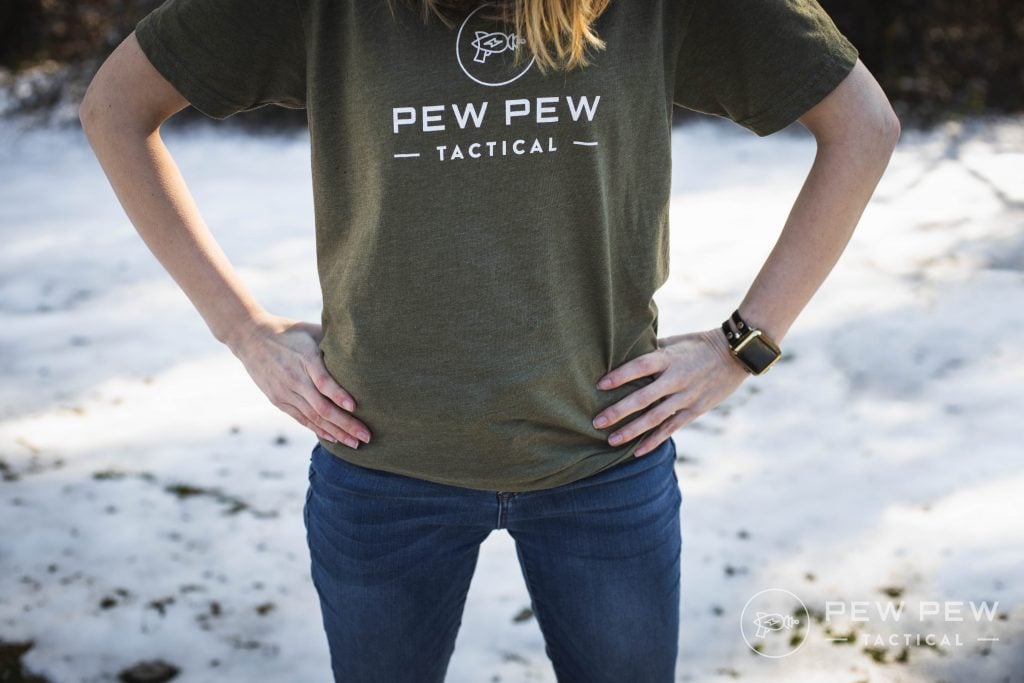
I get that. I’ve been there before. Over a decade ago, I was combing through the internet and forums, desperately trying to understand this concealed carry thing.
To be frank, it was really annoying. And I want to save you time, money, and sanity.
So, for the next few weeks, I’m going to dive into the different styles of carry.
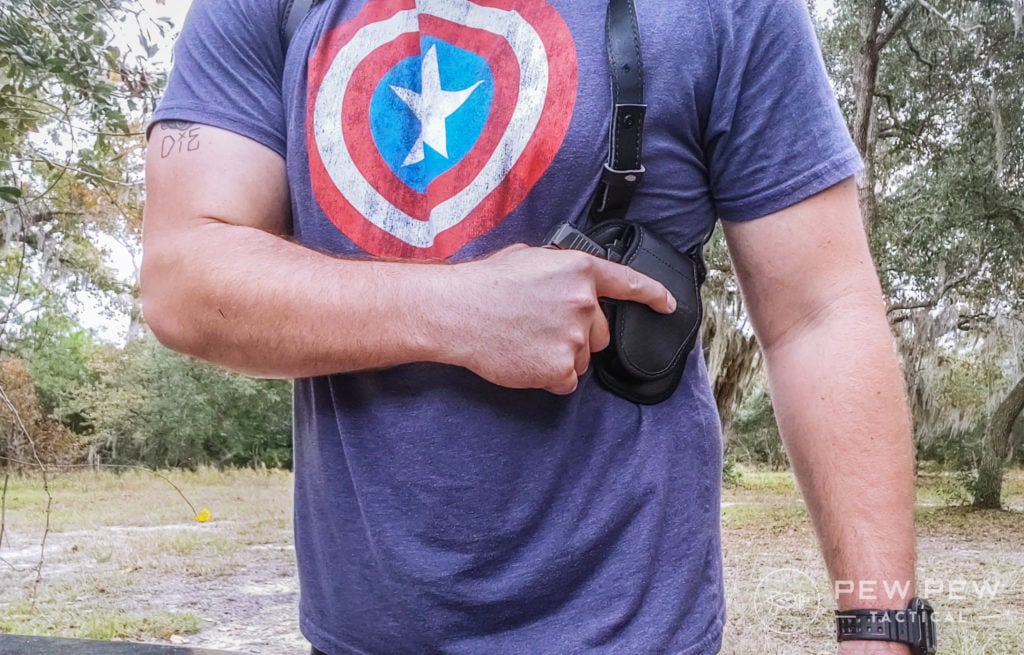
I want to share what those carry methods look like, what holsters you can expect to find, how to make it work for your wardrobe, and hopefully answer any questions you have regarding the different types of concealed carry.
Kicking off this week — strong side carry! It’s one of the most popular and common carry methods. Why?
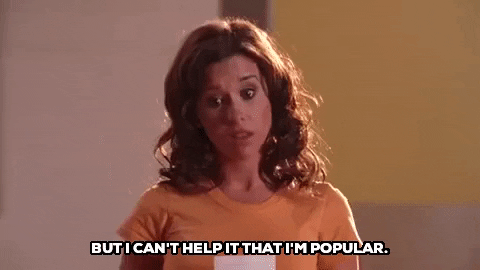
Glad you asked; let’s get to know strong side a little better…
But first, if you want to see some strong side carry in action as well as gain some additional tips, check out the Brownells Daily Defense video below.
Table of Contents
Loading…
What is Strong-Side Carry?
The most obvious question is…what is strong side carry?
If we imagine the body as a clock with the belly button resting at 12 o’clock, then strong side sits at the 3 or 4 o’clock position on the dominant side hip.
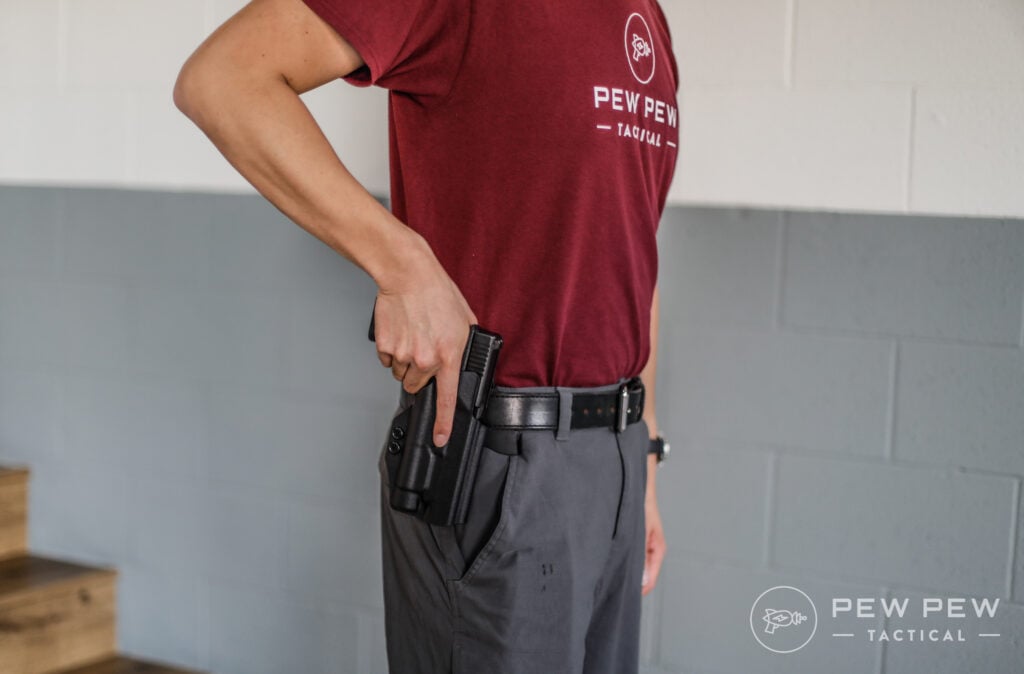
With strong side, you have the bonus of some versatility with either inside-the-waistband or outside-the-waistband holster styles.
IWB means the holstered gun nestles on the inside of the pants between the wearer and beltline.
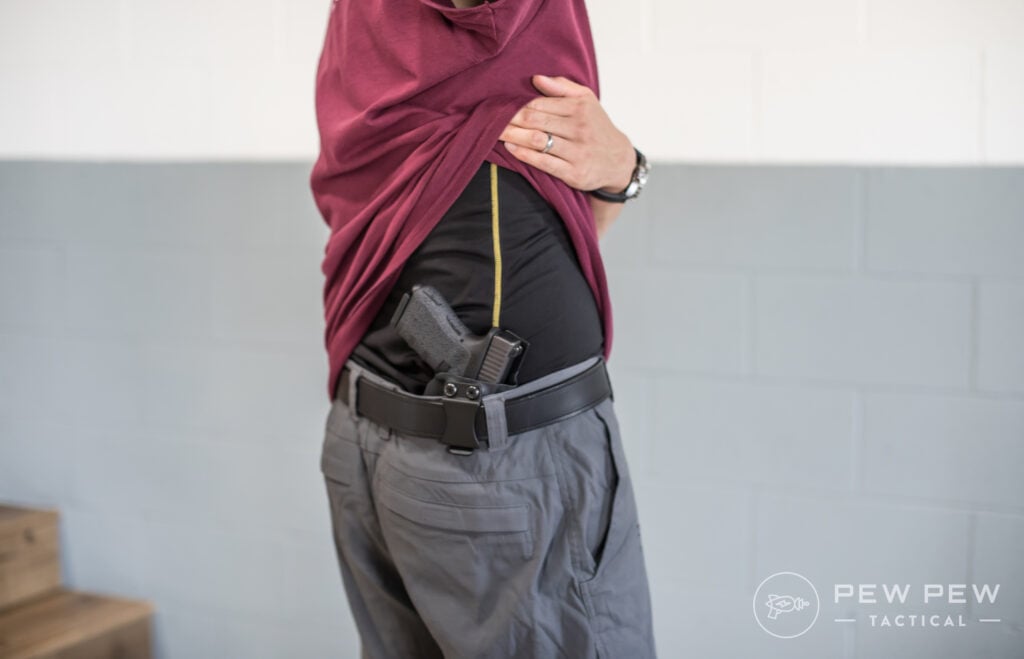
Naturally, that means OWB places the holstered gun on the outside of the pants.
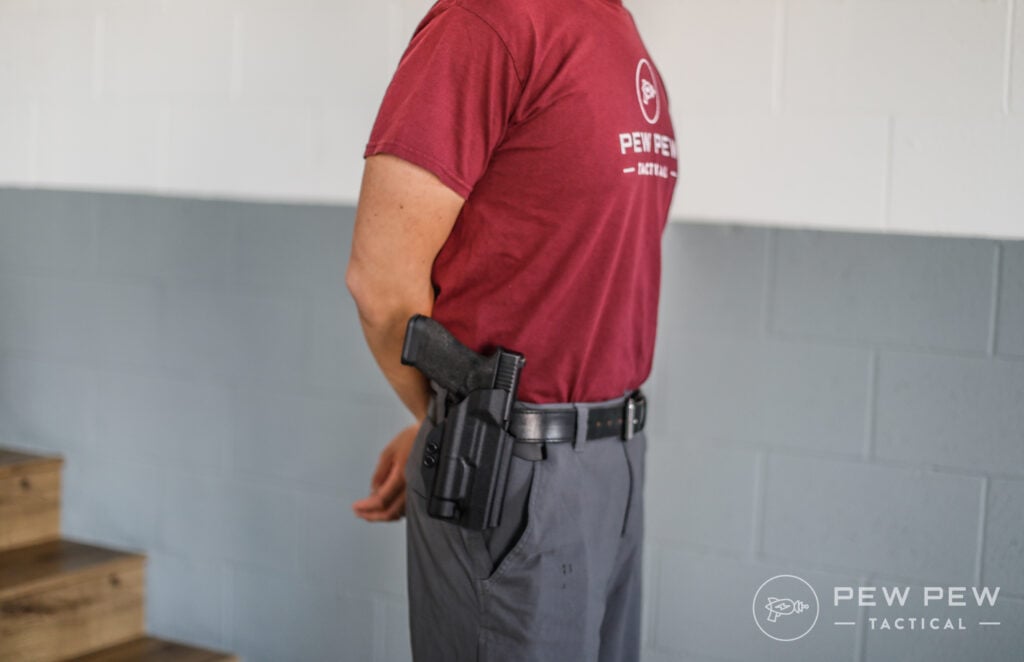
Pros of Strong Side Carry
So, what are the benefits of strong side carry?
Arguably the biggest pro comes down to popularity. While mom might argue that following the crowd isn’t wise (“Would you jump off a bridge if all your friends did…”) in the world of concealed carry, it’s advantageous.
A bunch of people carrying, in the same way, opens the door to more gear options.
And strong side carry brings the greatest amount of choices in terms of holsters.
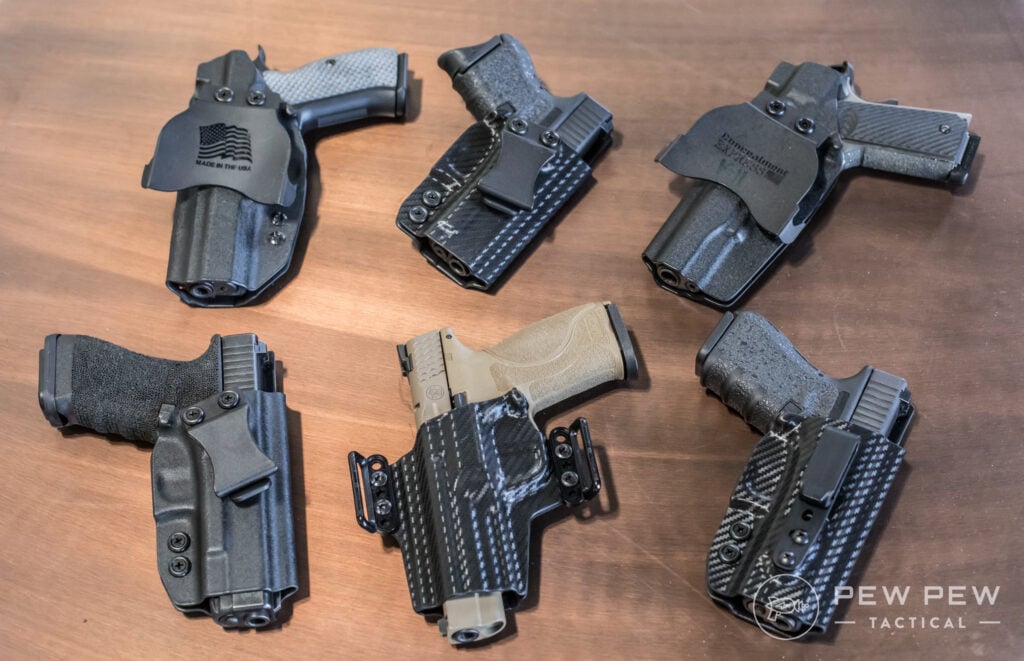
More holsters are made for this style of carry than pretty much any other mode of carry. This means you have plenty to choose from at various price points too.
Most people also find it decently comfortable. Again, with a wealth of holsters to choose from, you really can dial in what feels the best to you.
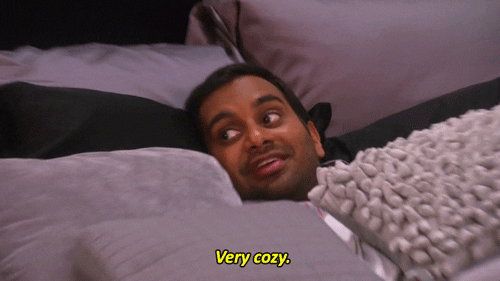
Don’t know where to start in choosing a holster? We got you, fam. Check out our article on the Best IWB Holsters.
Strong side carry also easily integrates into your current lifestyle. This style proves pretty quick and easy to accommodate, so there’s less of a learning curve.
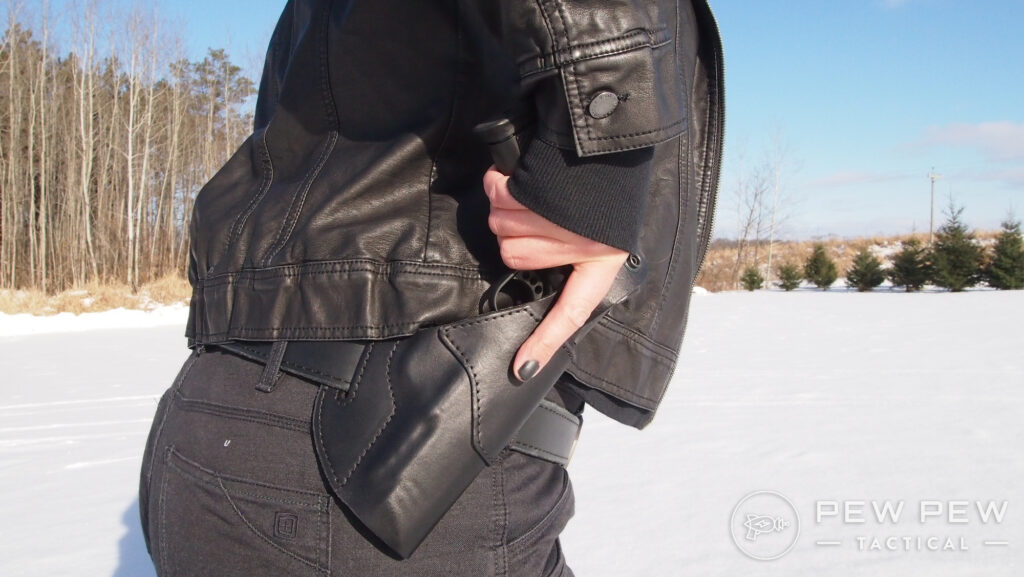
This is a big motivator, especially among newer concealed carriers.
Let’s be real; the less intimidating something seems, the more likely people will adopt it. Such is the case of strong side.
Finally, strong side carry also presents a reasonably quick and efficient draw. It’s a natural draw stroke for most folks.
Not to mention, having the gun right there on the hip makes it easily accessible.
Cons of Strong Side Carry
We laid out the pros, but there’s got to be cons, right?
As with anything in life, yes, there is a downside.
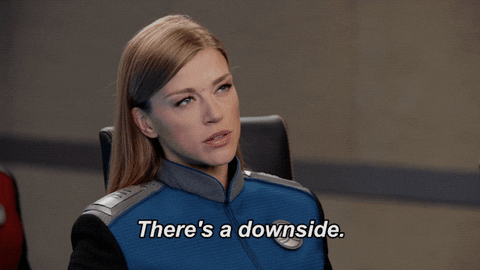
Straight up, strong side carry is a pain in the car. Like, literally. Depending on where your seatbelt/buckle and holster meet, it can cause added pressure on the gun.
Not to mention, it can be challenging, if not entirely impossible, to draw while seated and buckled in the car.
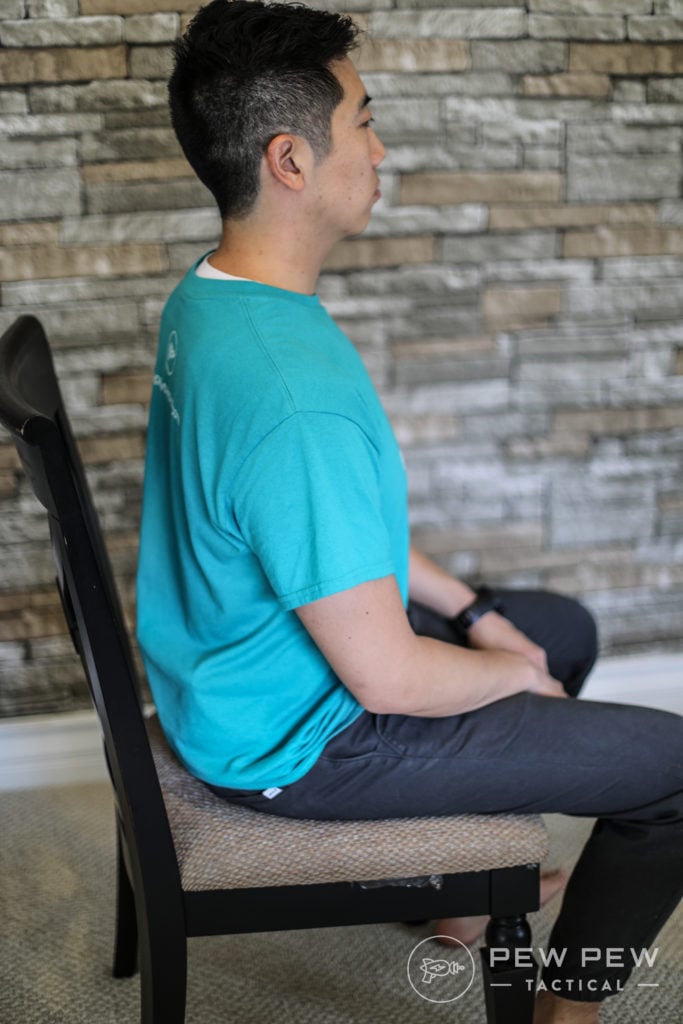
Ease of concealment also comes into play. It’s not always the easiest to conceal — especially if you prefer OWB.
The key to getting strong side, right? Ensuring your shirt or blouse adequately covers the gun and holster and isn’t so tight that it causes the gun to print.
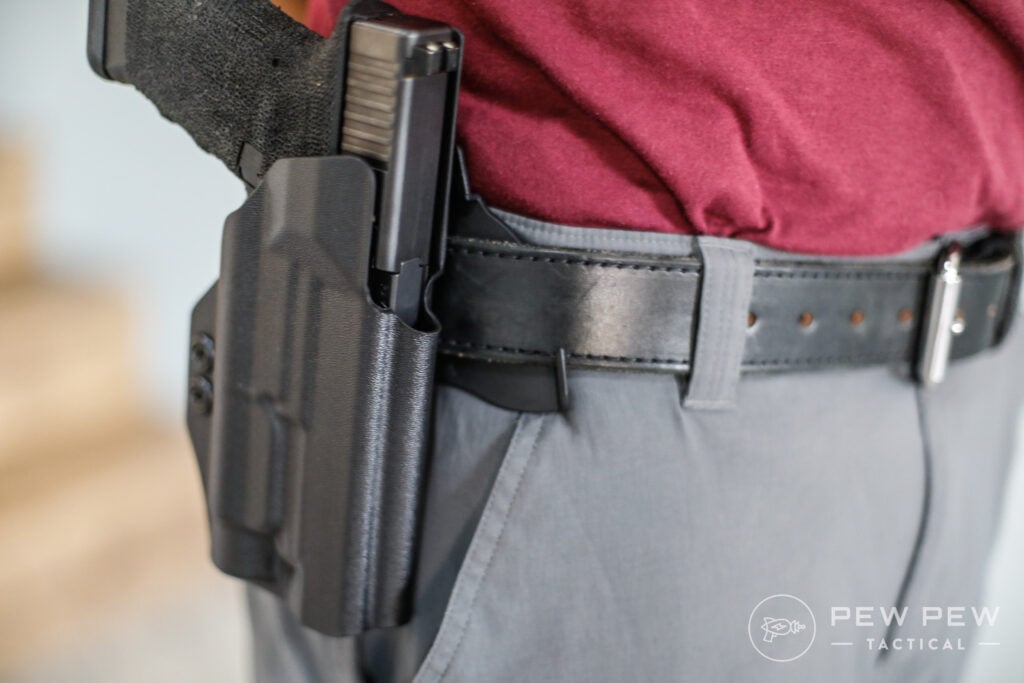
No worries though, we have some tips below to help you better conceal strong side, so keep reading…
Tips for Better Strong Side Carry
1. Clothing
Strong side carry dictates a need for longer shirts and blouses that cover the holster and gun. Typically, this isn’t a big deal for most people, but if you prefer crop tops or shorter shirt styles, you might want to reconsider strong side carry.
Otherwise, just make sure the tail of your shirt completely covers the muzzle of the gun in the holster.
IWB is a lot more forgiving in terms of clothing. I find I can wear a lot of different outfits successfully with an IWB holster.
That IWB design plus its location on the inside of the pants pulls the holster closer to the body, reducing printing.
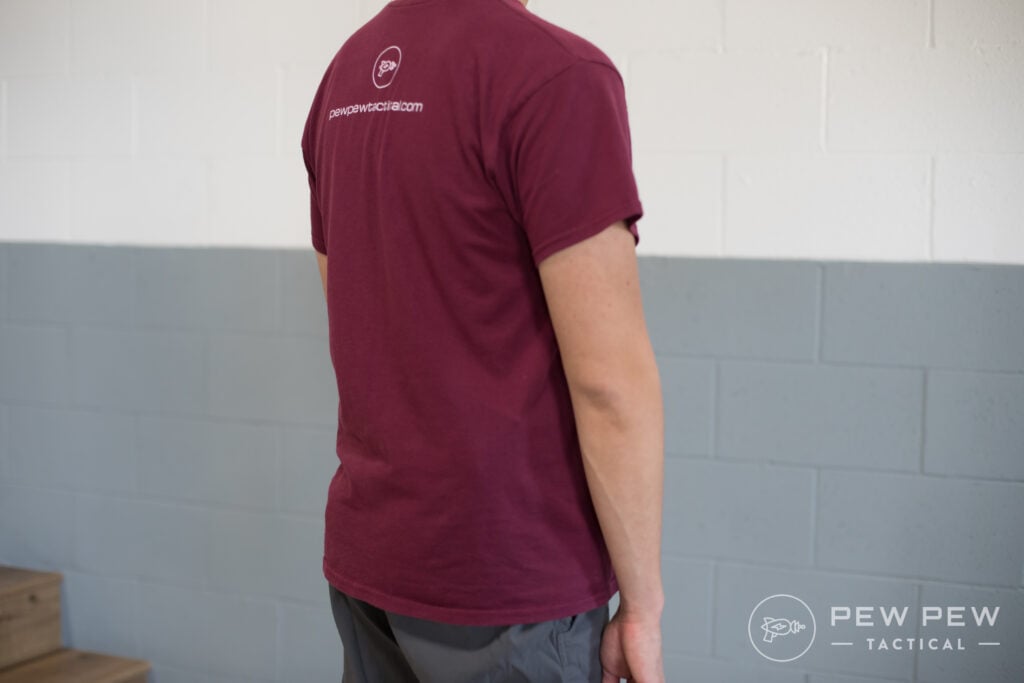
OWB tends to get a bit tricky because of the holster and gun riding on the outside. Printing often becomes a concern.
To mitigate this, choose heavier fabrics like cotton blends, flannel, etc. These don’t cling to the holster as easily, so they offer better concealment.
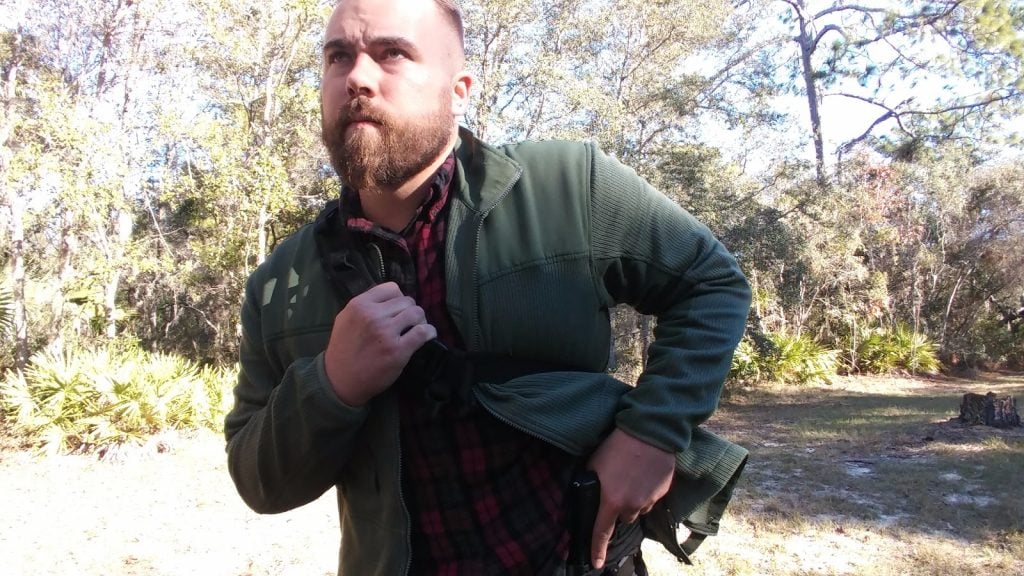
You might also consider relegating OWB to winter and fall months, where you’re donning sweatshirts, sweaters, and jackets. These bulkier items hide OWB holsters much better than tight t-shirts and tank tops.
For more tips on making your wardrobe work with concealed carry, check out our article that answers the question, Should I Dress Around My Gun?
2. Holster + Belt + Handgun
Strong side does open the door for a range of firearms to carry. In the winter, slap on a full-size Glock. And step down to a smaller Sig Sauer P365 in the summer months.
But, as with anything concealed carry, the holster/belt/gun combo makes a difference.
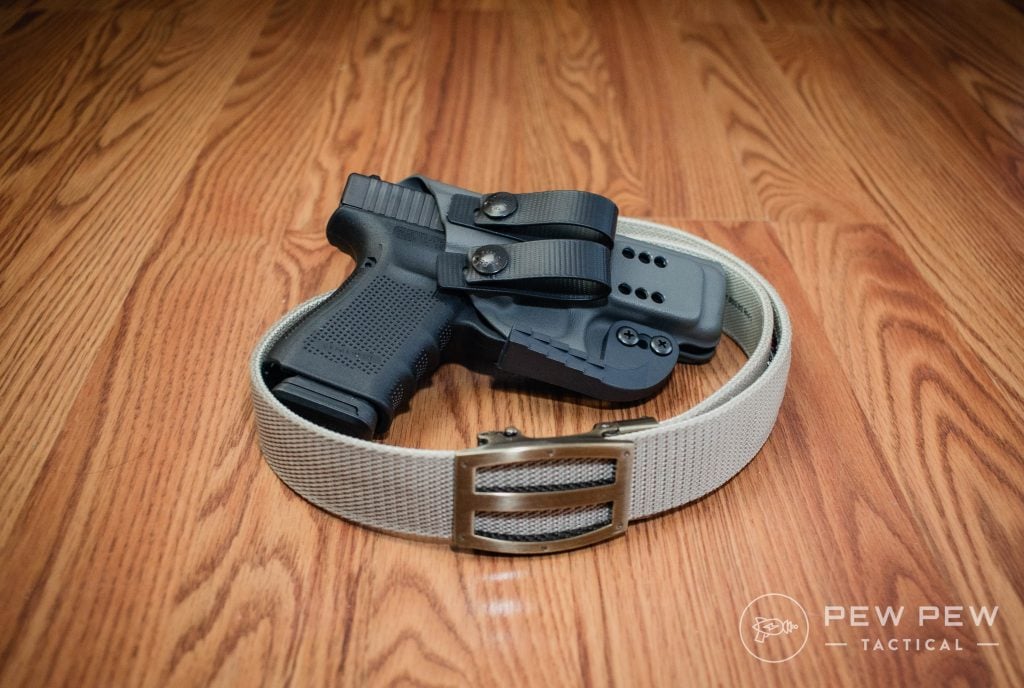
When putting everything together, make sure the gun works well with the holster you choose. A flimsy fabric holster prints worse with a large, full-size gun.
For IWB, I prefer Kydex or injection molded for the best retention. I also dig belt loops instead of clips since clips can wear down and break over time.
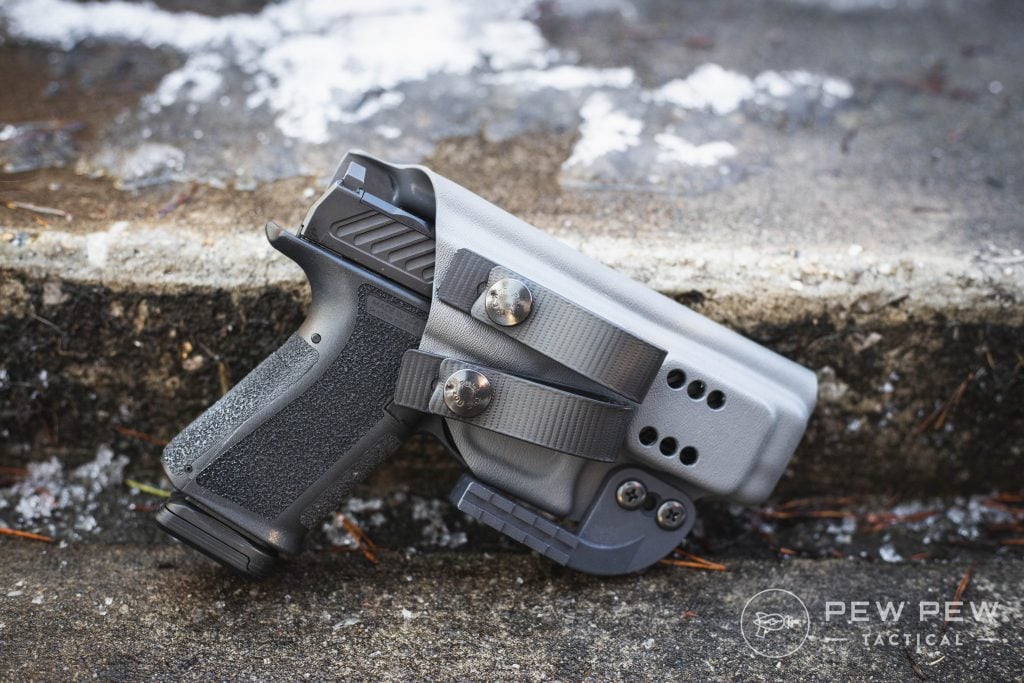
For OWB, a good pancake-style holster reduces printing by bringing the gun into you. Plus, they tend to offer more comfort.
In short, invest in a good holster and a rigged gun belt to pair with your gun.
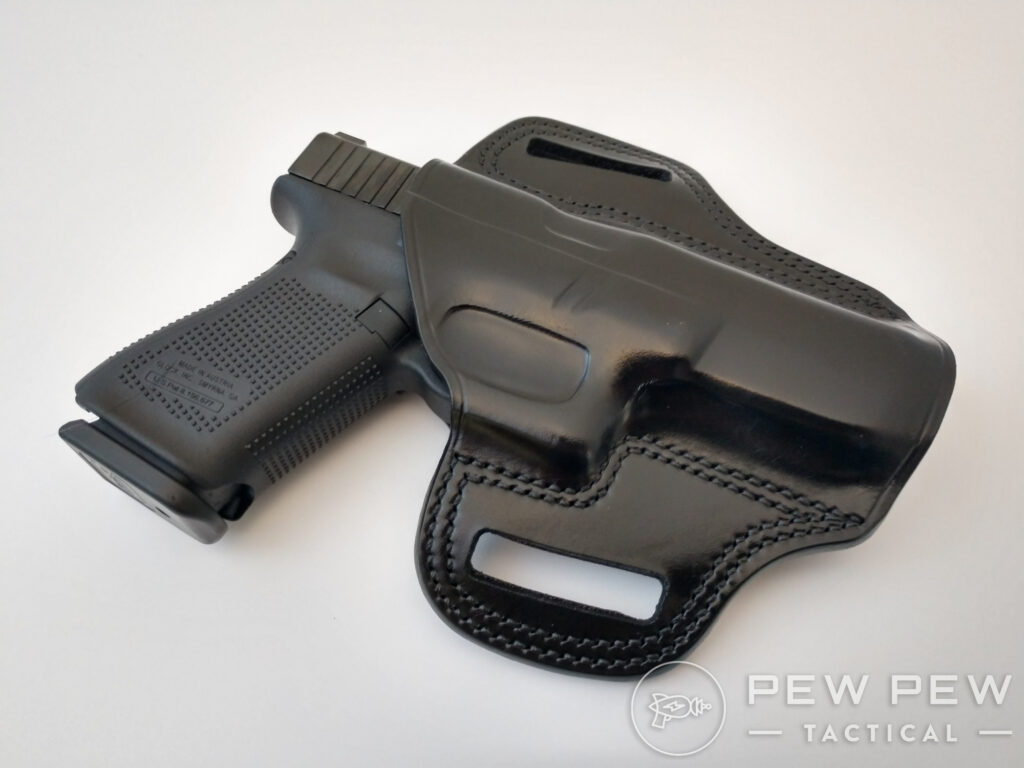
3. Training & Practice
I’ve said it before, and I will say it again. It doesn’t matter what style of carry or holster or gun you choose if you don’t have the training to back it up.
The best way to concealed carry comes down to investing in training, so you know what you’re doing. Then practice!
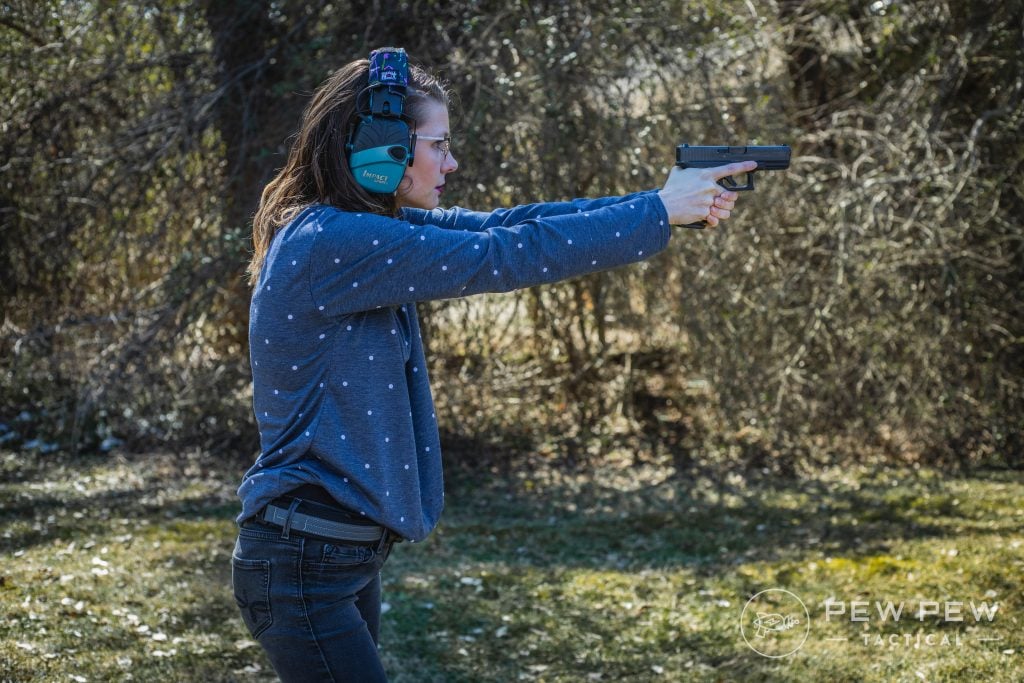
I know ammo is tight here in 2021, but that’s why we highly suggest dry fire drills. These can be done in your home for FREE!
Drawing drills, malfunction training, etc., are great ways to save cash and also perfect your movements and mindset.
Conclusion
Strong side carry is one of the most popular styles of concealed carry for a reason. Easy and effective, it gets the job done.
Like most styles of carry, it relies on decent gear and good training. Pair that with your wardrobe, and you’ll be ready to go!
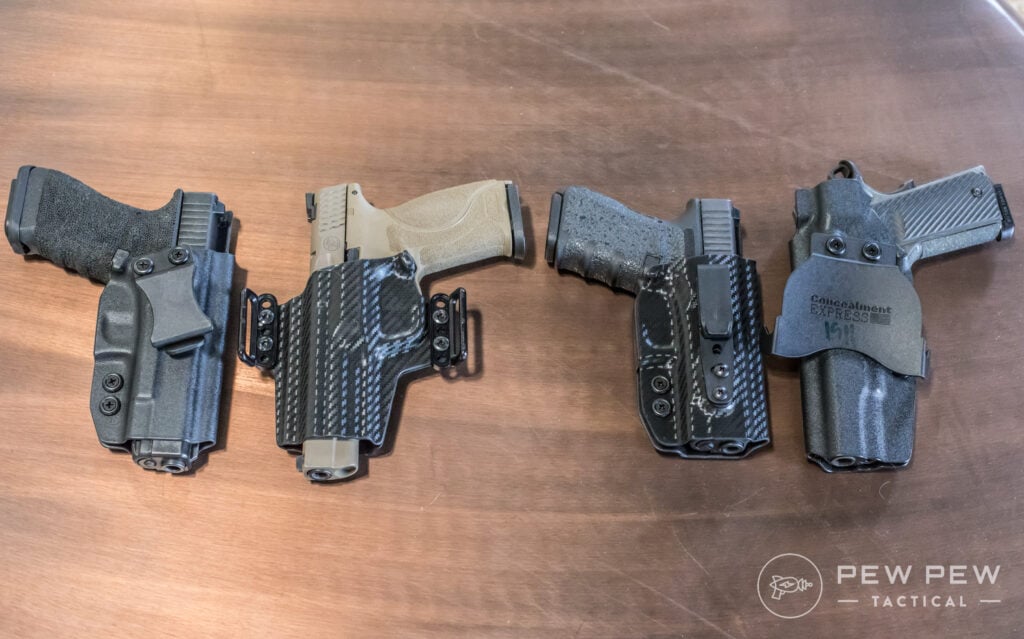
For more tips and tricks, check out the Brownells Daily Defense video below.
What are your thoughts on strong side carry? Let us know what you think below. Ready for more concealed carry action? Check our Definitive Resource for Concealed Carry.

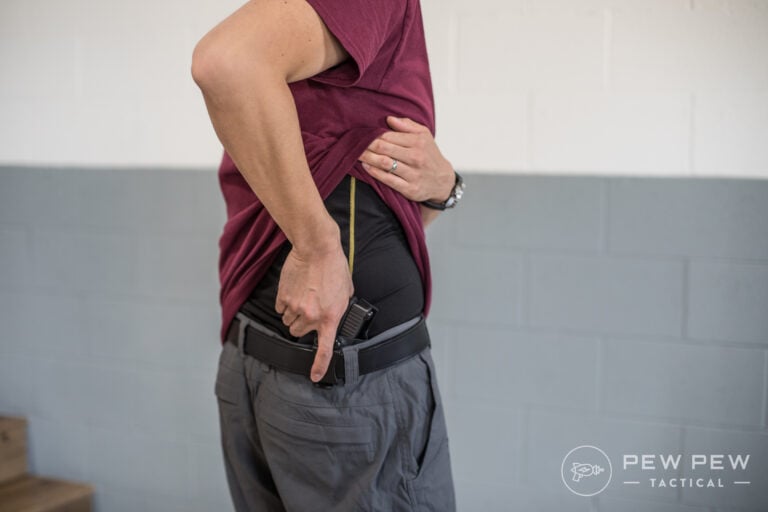







Leave a Reply